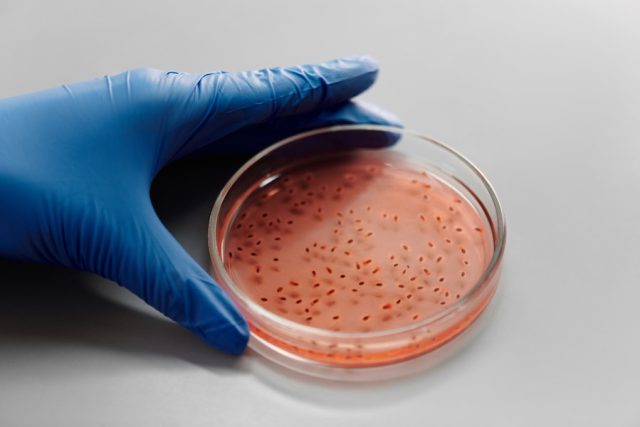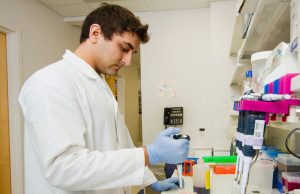Comparative genomics plays a crucial role in understanding the complexity and diversity of biological systems across different organisms. One important aspect of comparative genomics is the identification and analysis of orthologs, which are genes that have evolved from a common ancestor through speciation events. Ortholog assays have emerged as a key tool for comparative genomics research, enabling scientists to compare gene sequences, structural features, and functional characteristics between different species.
Orthologs are particularly important because they can provide insights into the evolutionary history of organisms and the mechanisms underlying their genetic diversity. By comparing orthologs between different species, researchers can identify conserved regions in genomes that are essential for basic cellular functions. Furthermore, studying orthologs allows scientists to infer the function of unknown genes based on their homology with known genes in other organisms. This approach has led to significant breakthroughs in fields such as developmental biology, molecular genetics, and genomic medicine.
What Are Orthologs And Why Are They Important?
Orthologs, defined as genes that evolved from a common ancestral gene through speciation and have retained similar functions across different species, are crucial for comparative genomics studies due to their ability to provide insights into the evolutionary relationships and functional conservation among organisms. Ortholog identification methods include sequence similarity searches, phylogenetic analysis, synteny analysis, and gene expression patterns. These methods allow scientists to identify orthologous genes in different species and compare their functions.
Orthologs play an important role in understanding the evolution of gene function and regulation. By comparing the sequences and functions of orthologous genes across different species, researchers can infer how genetic changes have affected phenotype over time. In addition, orthologs can be used as targets for drug development or as models for studying human diseases since they are often conserved across different organisms. Overall, ortholog assays are a key tool for comparative genomics research that provides valuable information about the evolutionary history and functional conservation of genes among different species.
Evolutionary Relationships Revealed Through Orthologs
Phylogenetic analysis of homologous genes can provide insight into the evolutionary relationships between species. Orthologs, in particular, are highly conserved genes that have diverged after a speciation event and can be used to trace the history of a gene family across different organisms. By analyzing multiple orthologs from different species, scientists can construct phylogenetic trees that show how these species are related to each other.
One important concept in building phylogenetic trees is the molecular clock hypothesis, which proposes that mutations accumulate at a constant rate over time. This allows scientists to estimate the time when two species diverged by comparing their DNA sequences or amino acid changes in their orthologs. However, it is important to note that this hypothesis may not always hold true due to factors such as natural selection and genetic drift. Nevertheless, studying orthologs using phylogenetic analysis remains a key tool for comparative genomics and has helped shed light on the evolutionary relationships between diverse groups of organisms.
Comparative Functional Genomics Using Orthologs
Comparative functional genomics relies on the analysis of conserved gene sequences across different species to identify potential functional similarities and differences. Orthologs are genes that evolved from a common ancestor in different species and have retained similar functions, making them valuable markers for comparative studies. One approach to studying ortholog function is through their expression patterns, which can reveal how they respond to environmental cues and developmental changes. For example, comparing the expression of orthologs involved in stress response between different plant species can provide insights into how plants adapt to different environments.
Another way to study ortholog function is by analyzing their interaction networks. By identifying proteins that interact with orthologs in one species, researchers can predict potential interactions in other species and gain insights into the underlying biological processes. This approach has been used to compare protein interaction networks between humans and mice, revealing both conserved interactions as well as differences that may underlie species-specific traits or diseases. Overall, comparative functional genomics using orthologs provides a powerful tool for understanding the evolution of biological systems and identifying new targets for drug development or genetic engineering.
Drug Discovery And Ortholog Assays
Drug discovery is a complex process that involves the identification and validation of potential drug targets, and ortholog assay have emerged as valuable tools for this purpose. Orthologs are genes in different species that share a common ancestry and perform similar functions. By comparing gene expression patterns across different organisms, researchers can identify conserved pathways that may be targeted by drugs. This approach is particularly useful for identifying drug targets in diseases with complex genetic backgrounds, such as cancer or neurological disorders.
One example of how ortholog assays can aid in drug discovery is the identification of kinases as potential therapeutic targets. Kinases are enzymes involved in many cellular signaling pathways, and mutations in kinase genes have been linked to several diseases. By comparing the expression profiles of kinase genes across different species, researchers can identify conserved pathways that may be amenable to pharmacological intervention. In addition, ortholog assays can also help validate drug targets by providing evidence of functional conservation between species. Overall, ortholog assays represent a powerful tool for accelerating drug discovery efforts and improving our understanding of disease biology.
In conclusion, ortholog assays have become an important tool for identifying potential drug targets in various diseases by comparing gene expression patterns across different species. The use of such comparative genomics approaches has helped researchers to better understand conserved biological pathways and identify novel therapeutic targets with high specificity against disease-causing mechanisms. As the field continues to evolve, it is likely that we will continue to see new applications emerge for these invaluable techniques in both basic research and clinical practice alike.
Challenges In Ortholog Identification And Analysis
Identifying and analyzing orthologs present significant challenges due to the complexity of gene evolution and differences in gene function among species. One major challenge is ortholog annotation, which involves accurately identifying orthologous genes across different genomes. Various computational methods have been developed for this purpose, such as reciprocal best hits, phylogenetic analysis, and synteny-based approaches. However, these methods may produce false positives or negatives due to incomplete genome sequencing or gene loss/gain events. Therefore, experimental validation of putative orthologs is necessary to confirm their functional similarity and evolutionary conservation.
Another challenge in ortholog identification and analysis is the differences in gene function among species. Orthologs may have diverged in their functions due to changes in protein structure or regulatory elements during evolution. As a result, comparative genomics studies using orthologs should consider not only sequence similarity but also functional divergence or convergence among species. This can be achieved by performing functional assays on identified ortholog pairs to test their similarities or differences in biochemical activities or phenotypic effects. Overall, despite the challenges associated with identifying and analyzing orthologs, they remain a key tool for comparative genomics research that can provide insights into evolutionary relationships between species and the functional roles of genes across different biological systems.
Future Directions For Ortholog Research In Genomics
Exploring new avenues for investigating the evolutionary relationships between species and understanding gene function across different biological systems is a promising area of future research in genomics. One potential direction for ortholog research is to focus on advancements in high-throughput sequencing technologies, which have made it possible to sequence entire genomes more quickly and at lower cost than ever before. This has opened up new opportunities for comparative genomics and ortholog identification, as researchers can now compare multiple genomes within a single study or analyze large sets of data from various sources simultaneously.
Another important application of ortholog assays is in the field of synthetic biology. By identifying and characterizing functionally conserved genes across diverse organisms, researchers can use this information to engineer novel biological systems with desired properties or functions. For example, identifying orthologs involved in antibiotic resistance could lead to the development of new drugs that target these genes specifically. Overall, continued advancements in sequencing technologies and computational tools will undoubtedly lead to exciting discoveries in ortholog research, further expanding our understanding of genome evolution and functional diversity across the tree of life.
Conclusion
In conclusion, ortholog assays have proven to be a valuable tool for comparative genomics. Orthologs are important because they provide insight into the evolutionary relationships between species, as well as their functional similarities and differences. Through the use of ortholog identification and analysis, researchers can gain a better understanding of gene function and regulation across diverse organisms.
However, challenges in ortholog identification and analysis still exist. These challenges include issues with defining orthology, dealing with incomplete genome data, and accounting for gene duplications and losses. Despite these challenges, advances in technology and bioinformatics have allowed for more accurate and efficient identification of orthologs.
Moving forward, future directions for ortholog research in genomics may involve developing new methods for identifying homology and improving the accuracy of existing methods. Additionally, further exploration of the functional implications of identified orthologs could lead to important discoveries in drug development and disease treatment. Overall, the study of orthologs will continue to play a crucial role in advancing our understanding of evolution and genetics.














